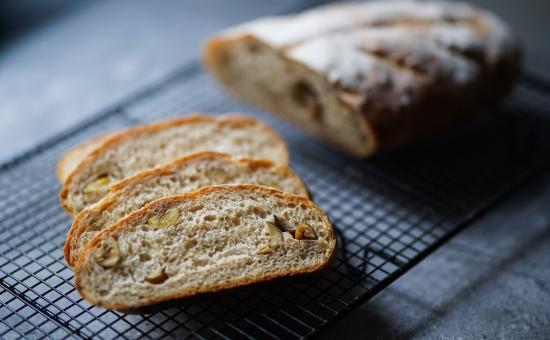Why Sourdough is Better Than Regular Bread
Sourdough baking is a method of baking that has been around for centuries. We’ve been baking bread, in some form, for thousands of years (at least). The first record we have of the sourdough baking method dates back to around 1500 B.C. in Egypt.
With the use of modern store-bought yeast, sourdough is not as common as it used to be, but it has made quite the comeback in recent years. People have discovered the benefits of sourdough as they discover the problems with regular bread.
I use sourdough starter in much of my baking; I’ve used it to make pie crusts, bread doughs, hamburger buns, and pizza doughs.
What is Sourdough?
The key ingredient in sourdough bread, what it gives it its texture and sour taste, is the sourdough starter. Sourdough starter is a mixture of flour and water (usually 50/50) that has been fed enough to develop its own collection of yeast, bacteria, and lactic acid. Sourdough starter has its own microbiome made up of bacteria and wild yeast collected from its environment. No two sourdough starters are exactly the same. Each one develops its own unique microbiome that gives it a unique smell and taste.
Sourdough is also unique from other yeasts in the way it develops the gluten in bread. The wild yeast and bacteria in the sourdough starter begin to digest the gluten in the bread during the fermentation process. The longer the dough ferments and the more it rises, the more gluten is broken down. Many people who have previously had problems with gluten have found that, after fixing the gut, they can occasionally enjoy sourdough bread.
Storebought sourdough bread is not the same as homemade sourdough. When you buy sourdough from the store, you have no idea how long the bread fermented or if it’s even real sourdough. If you do want to buy your bread, I recommend looking at a small local bakery or a farmers market where you can ask questions about the baking process.
I’ve linked my favorite sourdough recipes below and given a brief description of our favorite way to use them.
Artisan Sourdough Bread
This is the classic sourdough loaf of bread.
I get all of my sourdough recipes from Baking Sense, but generally, I don’t follow an exact recipe. I prefer to experiment. I follow this recipe’s measurements, but usually, I mix up the type of flour I’m using. I like the majority of the flour I use to be all-purpose flour, and then I add a little bit of rye flour, bread flour, or einkorn flour (or a mix of all three). Adding a variety of different flours can add nuttiness to your bread that would be lacking if you just used all-purpose flour.
The most important thing, in my experience, is making sure that your sourdough starter is very active, (the recipe I linked goes over this) before baking. Otherwise, you’ll end up with a loaf that doesn’t properly rise.
We like to make sandwiches with sourdough bread. Generally, we’ll use whatever we’ve got on hand, but whatever we do, we always throw on lots of different vegetables. I’m a fan of caramelized onions with bacon, greens, tomatoes, mustard, and a fried egg. Homemade pesto is also great on sandwiches or plain on toast. This bread is so good, it doesn’t need much else, though.





















